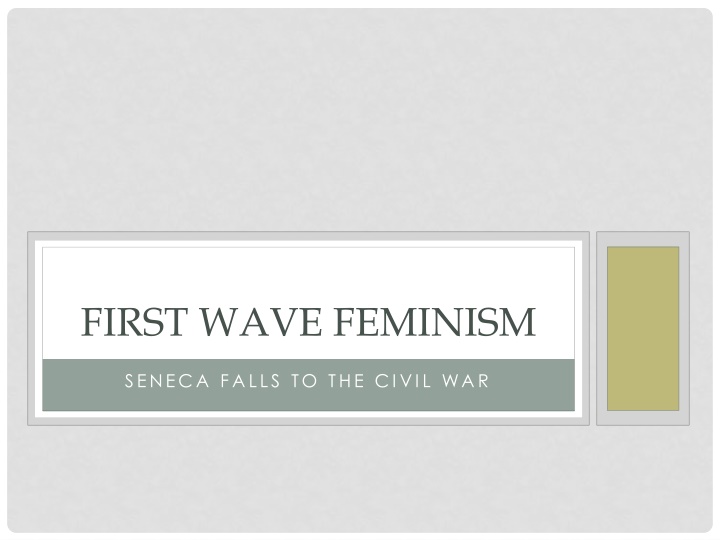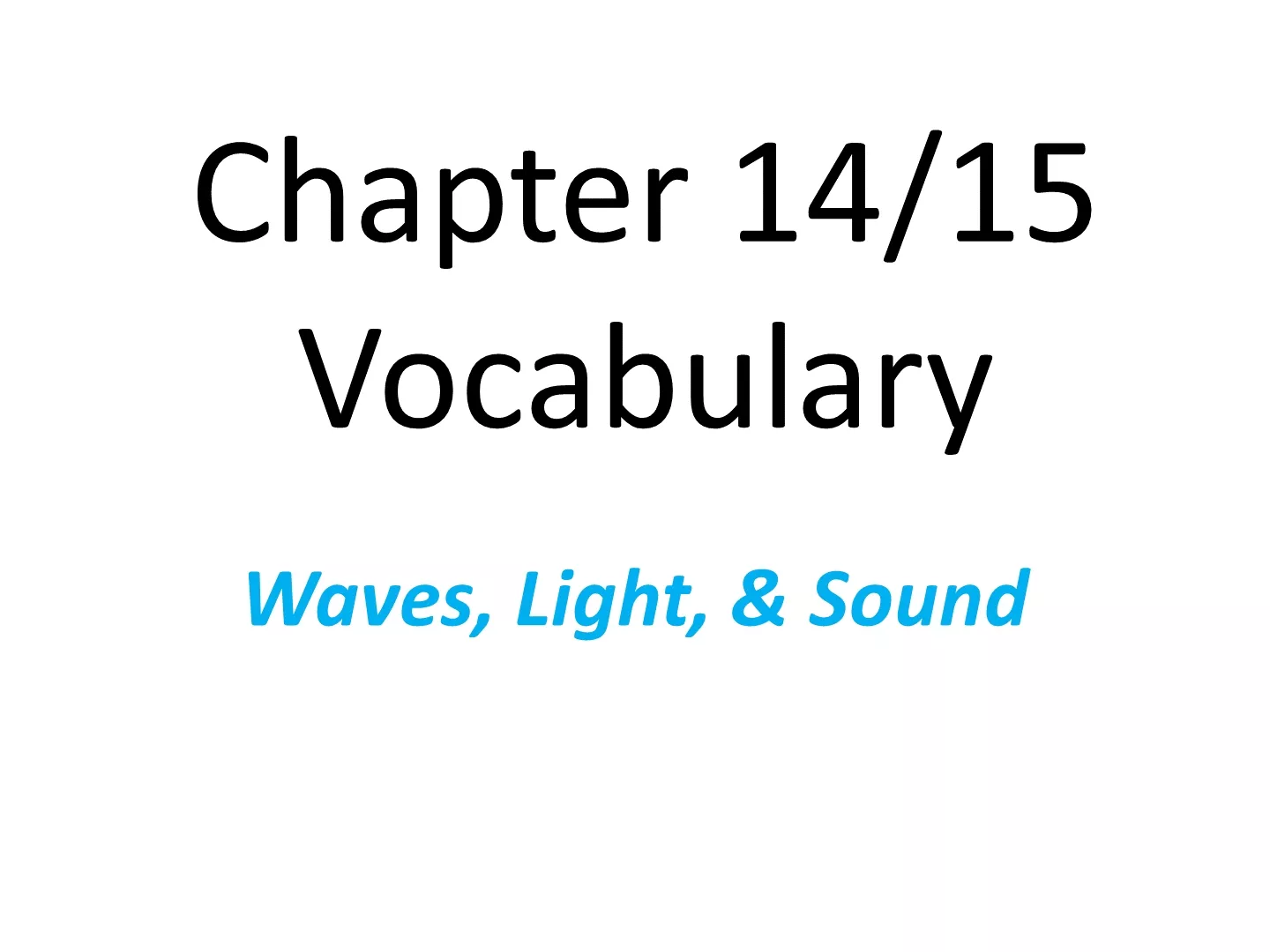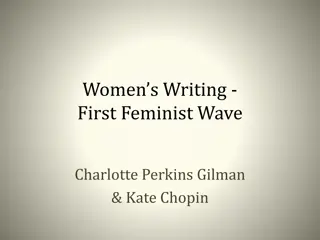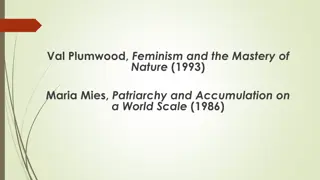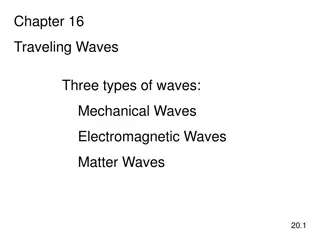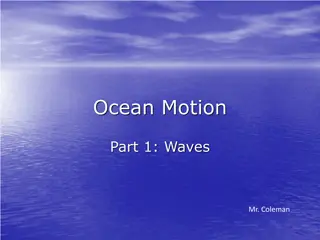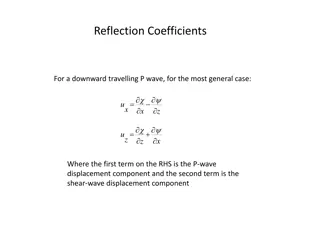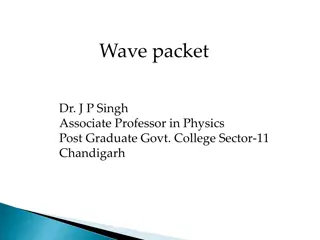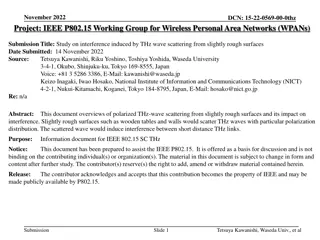FIRST WAVE FEMINISM
Women in the first wave feminism movement from Seneca Falls to the Civil War fought for equal rights, including voting, property ownership, and employment opportunities. Major players like Elizabeth Cady Stanton, Lucy Stone, Susan B. Anthony, and others paved the way for substantial achievements such as property rights, educational reforms, and eventually the right to vote through the 19th amendment in 1920.
Download Presentation

Please find below an Image/Link to download the presentation.
The content on the website is provided AS IS for your information and personal use only. It may not be sold, licensed, or shared on other websites without obtaining consent from the author.If you encounter any issues during the download, it is possible that the publisher has removed the file from their server.
You are allowed to download the files provided on this website for personal or commercial use, subject to the condition that they are used lawfully. All files are the property of their respective owners.
The content on the website is provided AS IS for your information and personal use only. It may not be sold, licensed, or shared on other websites without obtaining consent from the author.
E N D
Presentation Transcript
FIRST WAVE FEMINISM SENECA FALLS TO THE CIVIL WAR
WOMEN GET POLITICAL Many women were involved in Abolitionist cause and Temperance Movement (anti-alcohol) Anti-slavery political groups encouraged women s full participation speaking, organizing, etc. Politically active women hated the fact that they couldn t vote and help change laws by using the system. Petition to New York State Govt: Your Declaration of Independence declares, that governments derive their just powers from the consent of the governed. And as women have never consented to, been represented in, or recognized by this government, it is evident that in justice no allegiance can be claimed from them ... Our numerous and yearly petitions for this most desirable object having been disregarded, we now ask your august body, to abolish all laws which hold married women more accountable for their acts than infants, idiots, and lunatics.
SENECA FALLS CONVENTION First convention to be organized by women to work toward equal rights 1848 in Seneca Falls, New York Wanted: Voting rights, property rights (to own and inherit), the right to make contracts, serve on juries and better employment opportunities. Women were paid as much as men in the same job. Reactions: Some called them hens that crow and unnatural women Others supported them Fredrick Douglass was there and convinced them to keep the voting rights idea Early gains: New York & Pennsylvania pass laws granting women property rights in 1848
MAJOR PLAYERS Elizabeth Cady Stanton, Lucy Stone, and Susan B. Anthony & Margaret Fuller Strongly influenced by Quaker thought (pacifist) Some were arrested for trying to vote
WHAT THEY ACHIEVED By 1860, right to their own children in case of divorce or widowhood Right to own & inherit property in the U.S. Reforms to higher education, access to more professions Could go to college and study same curriculum as men by 1868 19thamendment: right to vote 1920 Required 2/3 popular vote--men Eventually outlawed Liquor in the 18thamendment (1919-1933). Repealed in the 21stamendment.
BLACK WOMENS MOVEMENT Free Black women wanted protections from abuse at work, especially domestic service Few of them were upper class, so they weren t so interested in being allowed to work and inheriting property was mostly a non-issue Had to march separately in some of the women s rights demonstrations of the 19thcentury White women were afraid of alienating the entire South from their cause Ideals & goals (mostly after Civil War) Lifting as we climb not just getting new individual rights and professional options, but helping the poor to improve their situation. Education as the key to getting out of poverty and preserving virtue (read: control of their bodies) worked to start schools and staff them worked to improve the image of black women across the country raise awareness of their respectability
MAJOR PLAYERS Ida B. Wells Sojourner Truth
CULTURAL CONTEXT: THE CULT OF TRUE WOMANHOOD Four tenants: Purity (sexual) Piety (religious) Submissiveness Domesticity Promoted in Ladies Conduct Manuals, in churches, etc. Early feminists didn t challenge all of these ideas The requirement of sexual purity is not easily challenged without repercussions Piety is not rejected directly in a deeply religious culture Submissiveness and Domesticity challenged by the new legal demands for education and self-determination
THE GREAT LAWSUIT What kinds of equality does Margaret Fuller imagine in marriage? Which is the best? How is she applying Emerson? Which parts of the Cult of True Womanhood does she reject and which parts does she embrace?
INCIDENTS IN THE LIFE OF A SLAVE GIRL How does the text echo the tenants of the Cult of True Womanhood? Purity? Piety? Submissiveness? Domesticity? At what point do these ideals no longer apply to her life? How does she manage to avoid alienating her (mostly white) readers?
